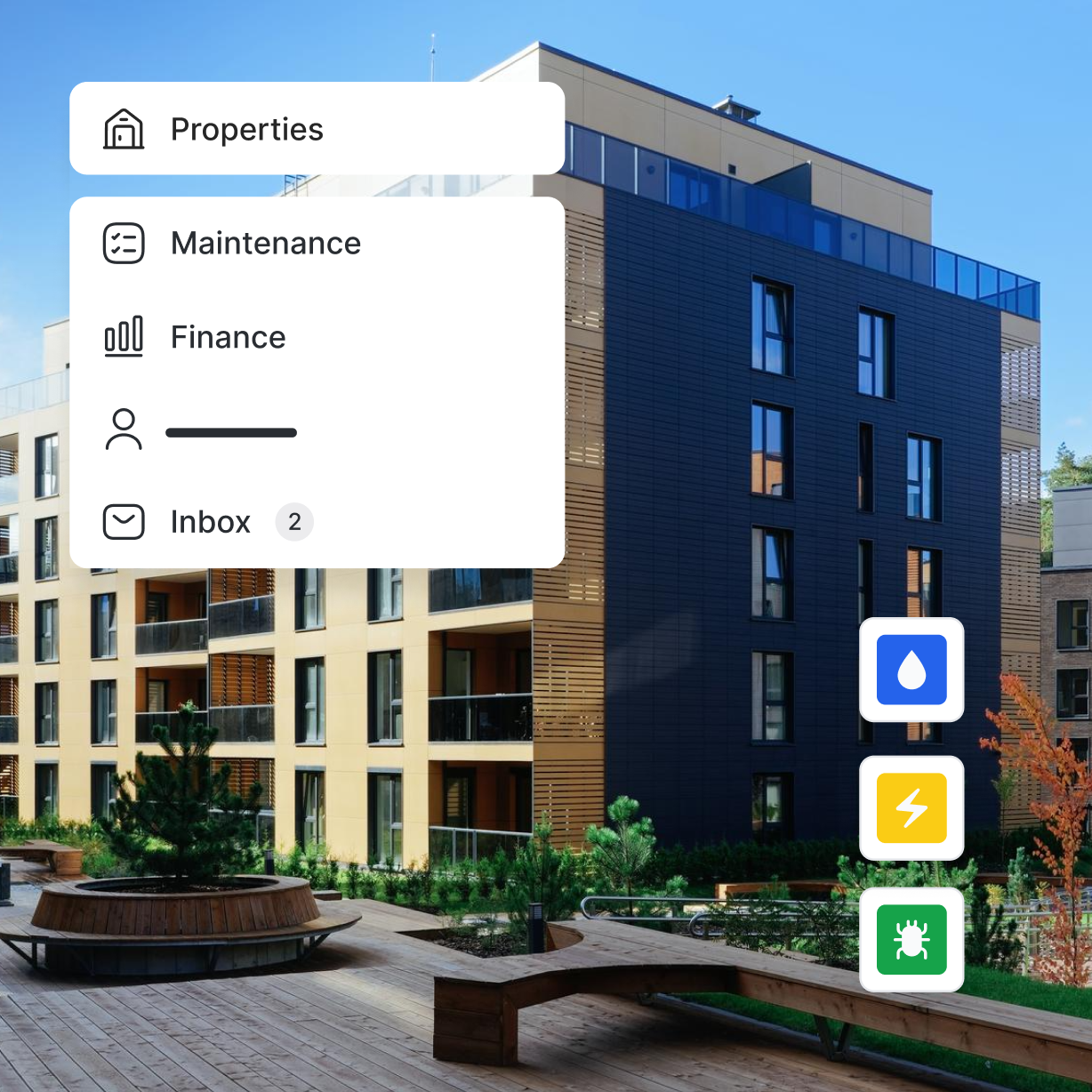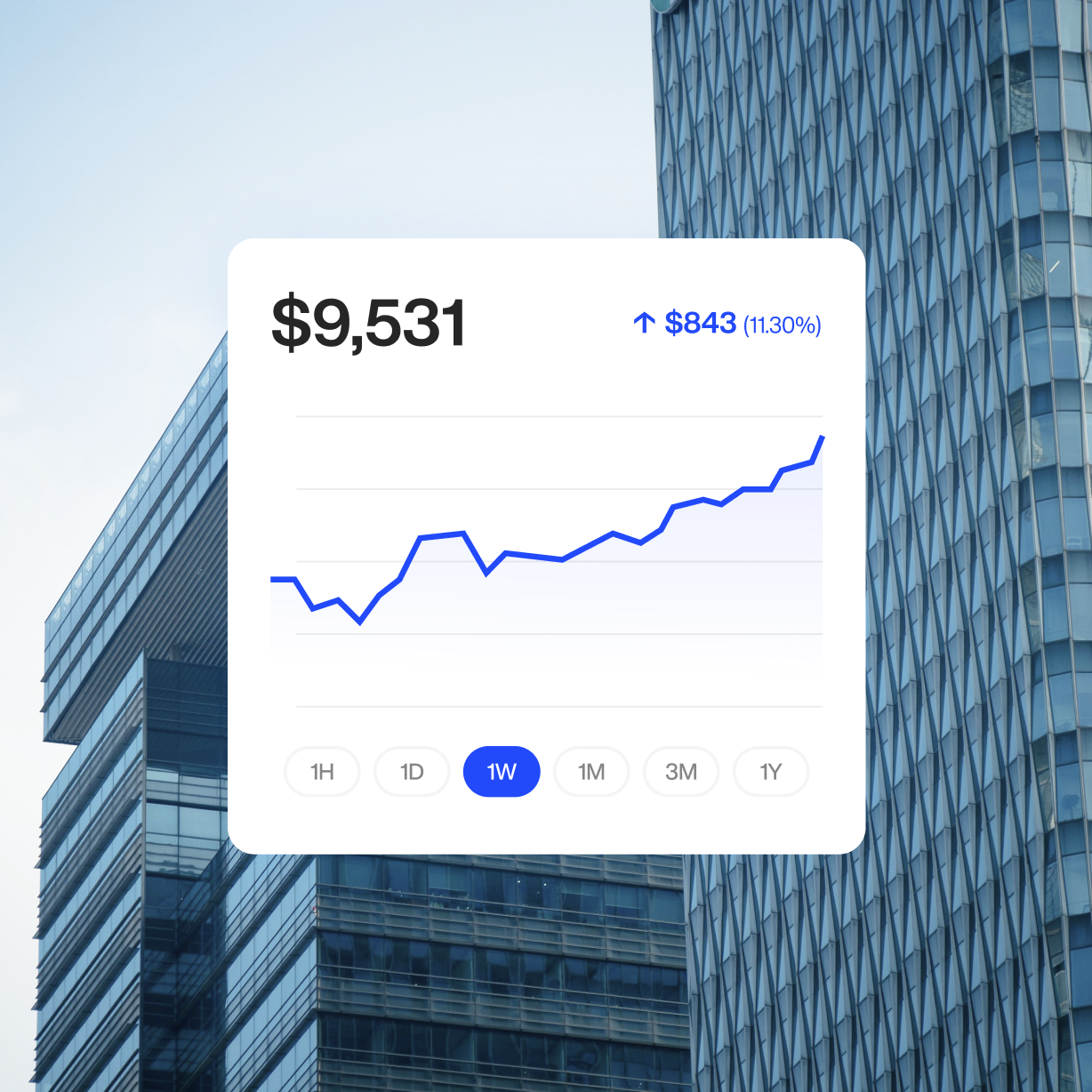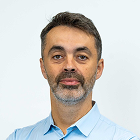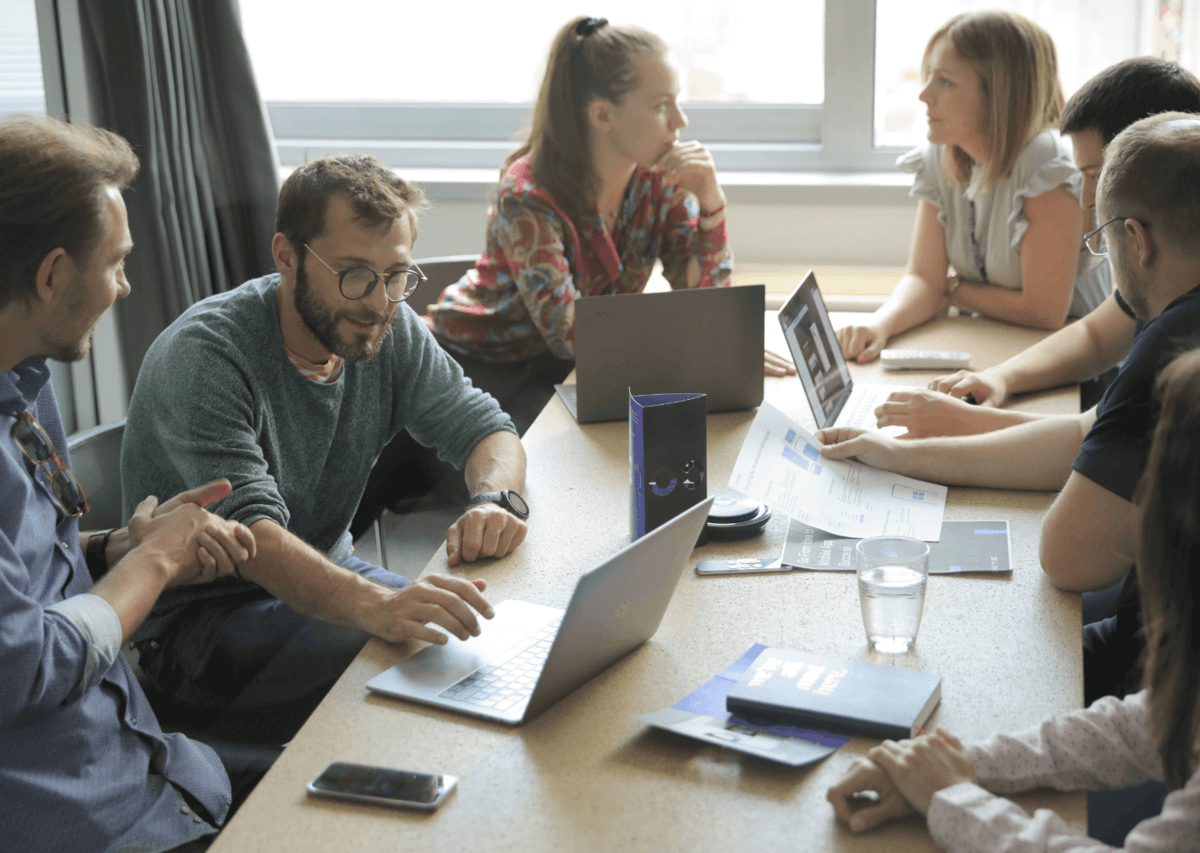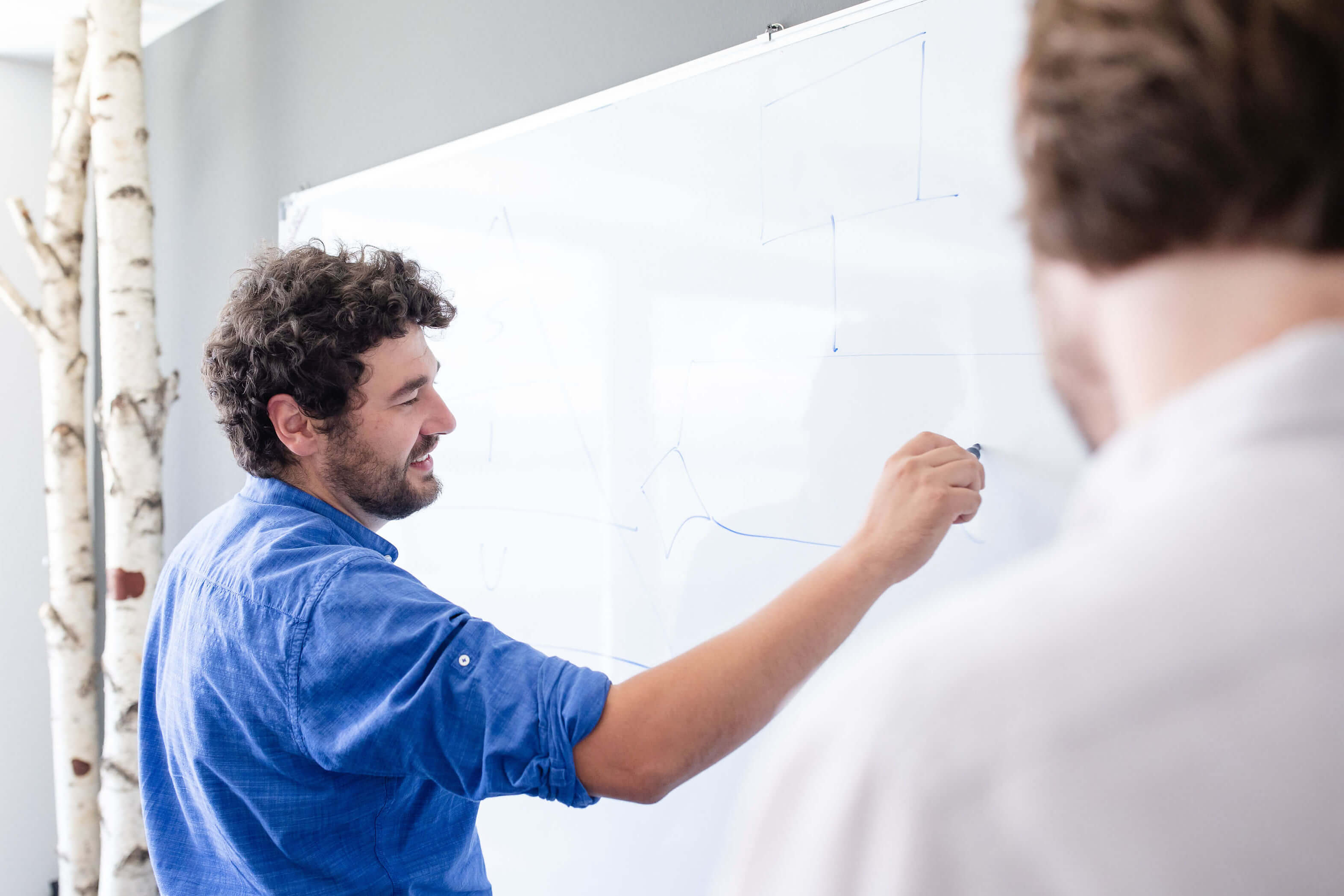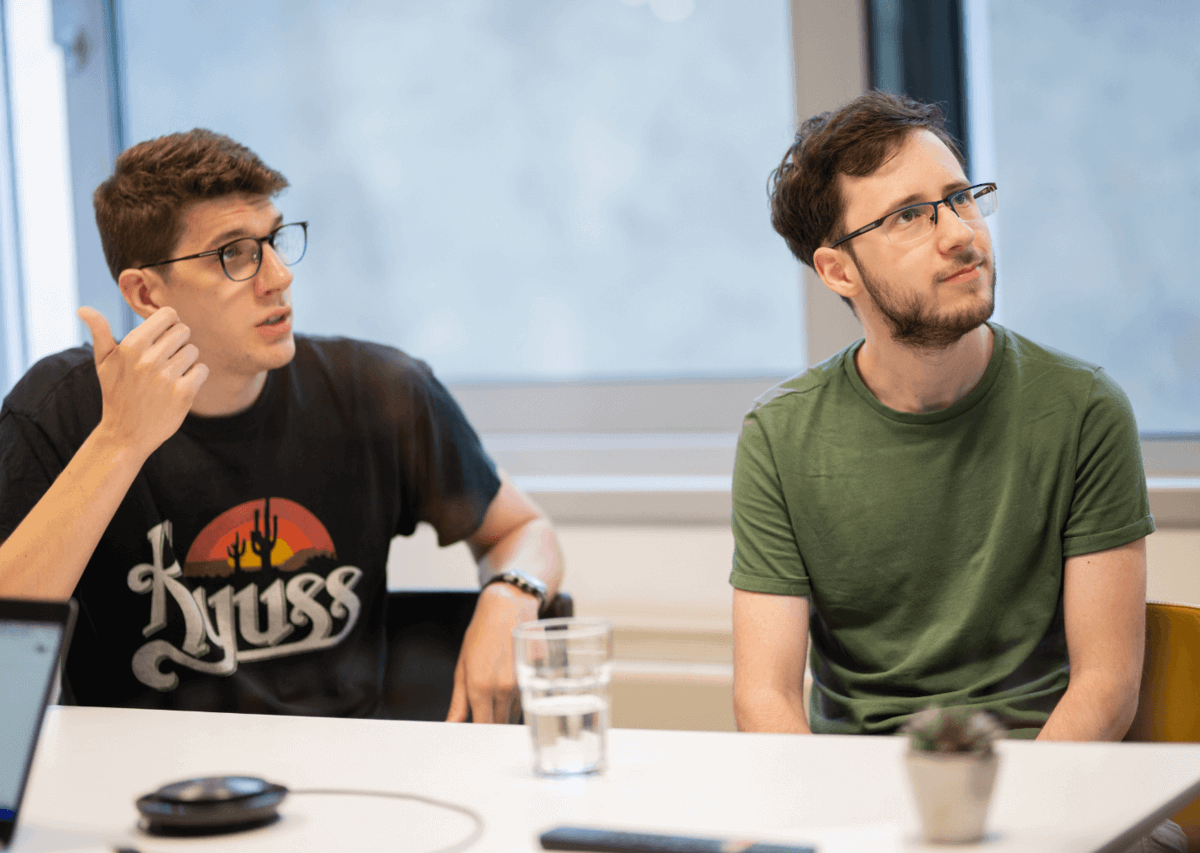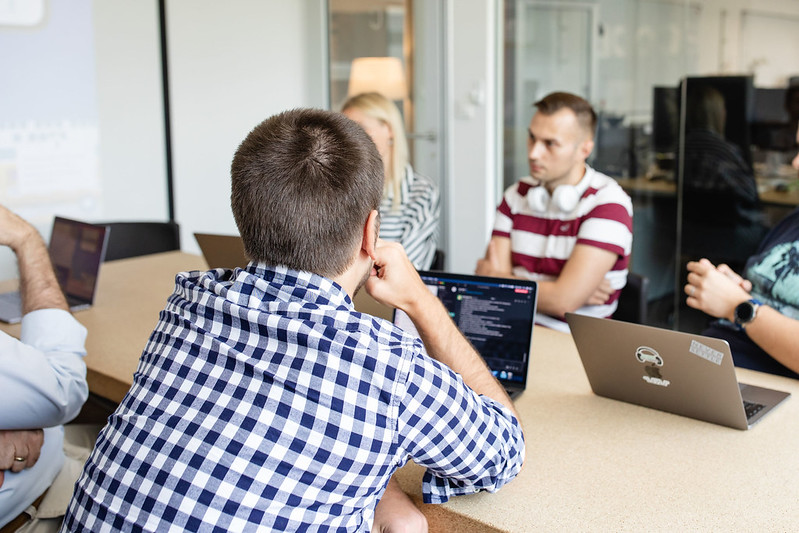We guided a Qatari real estate company through product discovery, resulting in a validated concept and complete blueprint for their digital platform.
PRODUCT DISCOVERY
Avoid costly, dead-end projects by following a data-backed product strategy. You’ll get guidance from experts who’ve been building million-download products consistently for more than 13 years.
What is Product Discovery?
Product discovery is the process of defining, validating, and planning your product idea before development begins. If you’re ready to invest €100,000+ into your software product, you should have a detailed plan before starting development. That’s where product discovery comes in.
Your benefits…
- Validate your idea before development
- Find product–market fit through research and testing
- Turn assumptions into data-backed decisions
- Align goals across design, business, and tech teams
- Define a realistic MVP scope and delivery plan
- Start development with a tested concept
Where strategy meets execution

The Process — How we validate your idea in a few
simple steps.
Research & strategy
Every product begins with questions. Who are we building for? What problem are we solving? How do we know it’s worth solving? In this phase, we find the answers.
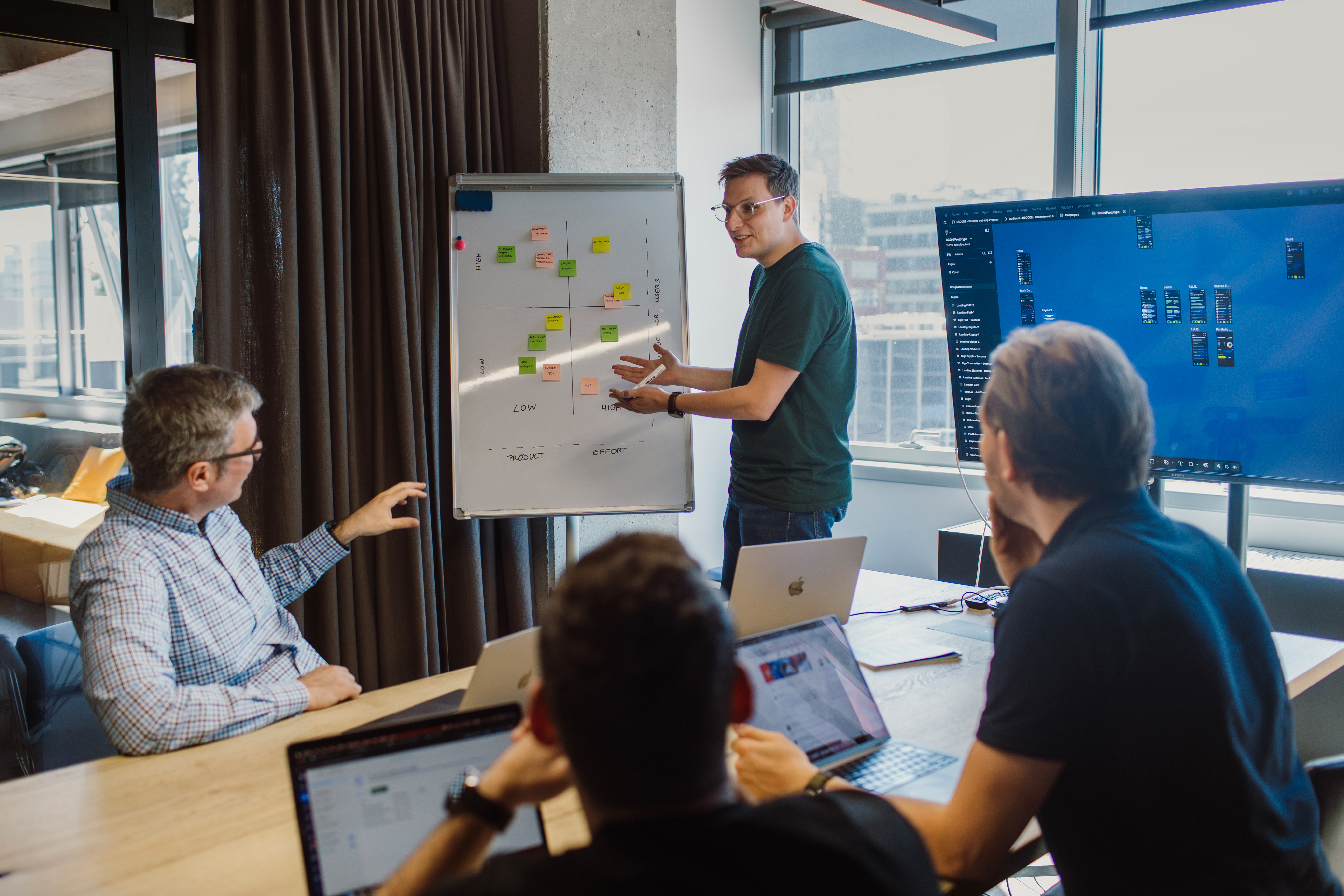
What we cover
- Alignment workshop and goal setting
- Assumption and risk mapping
- Market and competitor analysis
- User research and personas
Alignment workshop and goal setting
We start with a full-day discovery workshop involving your stakeholders, and our cross-functional team. Together, we define measurable business goals, success metrics, and the key problems to solve. We also identify the constraints – budget, tech stack, or time – that will shape every decision going forward. By the end, everyone is aligned around one vision and one definition of success.
Assumption and risk mapping
Every product idea carries hidden assumptions. We make them visible. Using a framework that covers desirability (will users want it?), viability (does it make sense for the business?), and feasibility (can it actually be built?), we identify what needs validation before investing in design or development. We then create a validation plan to test the riskiest assumptions first.
Market and competitor analysis
We analyze the market you’re entering to understand both opportunities and threats. This includes a detailed competitor feature breakdown, positioning map, and user feedback analysis. We look for white space — unmet user needs and neglected segments — that can define your unique value proposition. You’ll see exactly where your product fits and what will make it stand out.
User research and personas
We run interviews, surveys, or desk research (depending on your stage) to uncover what motivates users, what frustrates them, and how they currently solve the problem. From these insights, we create 2–4 detailed user personas and map their journeys, showing every step from trigger to goal completion. These artifacts make your users visible to everyone on the team.
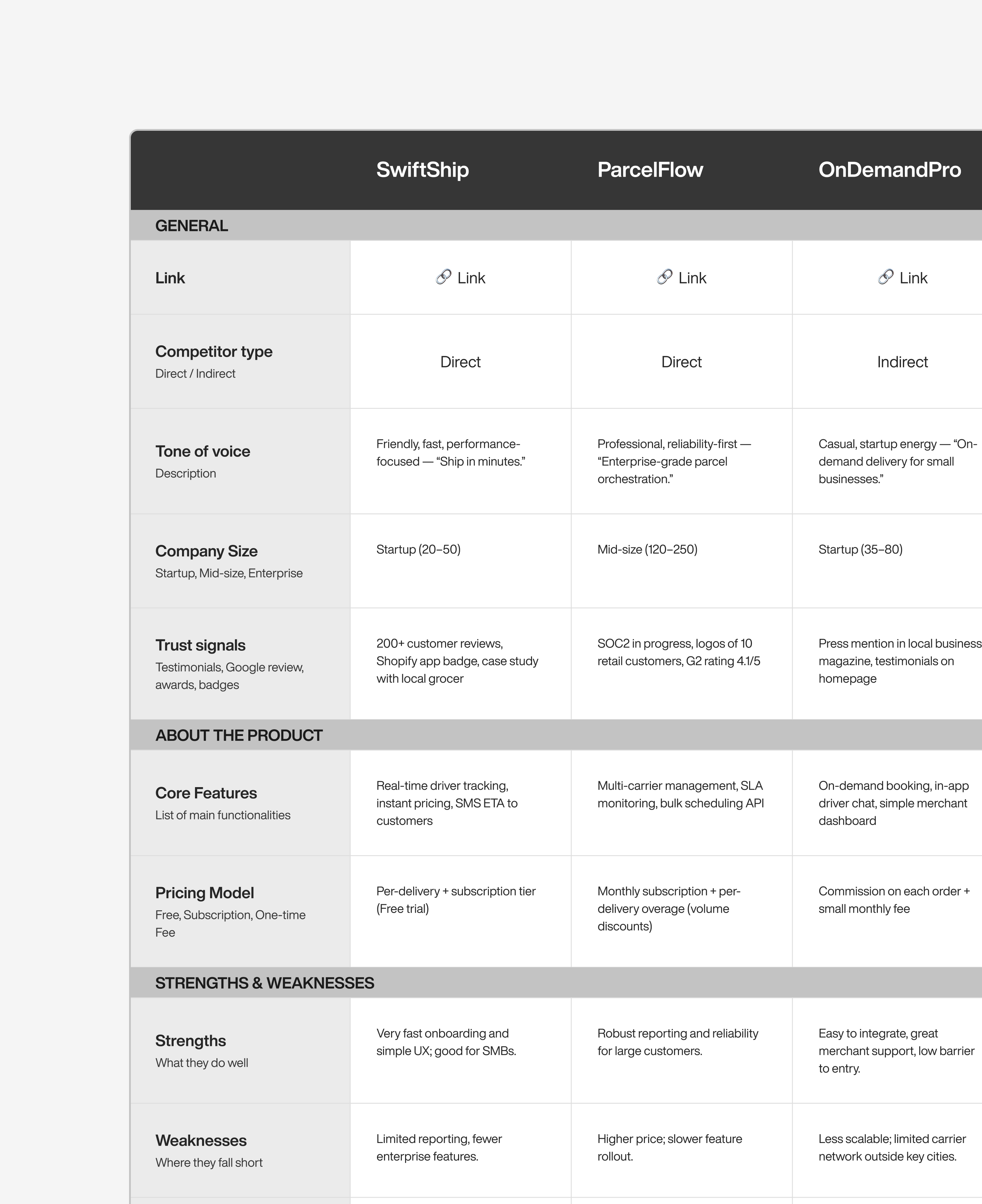
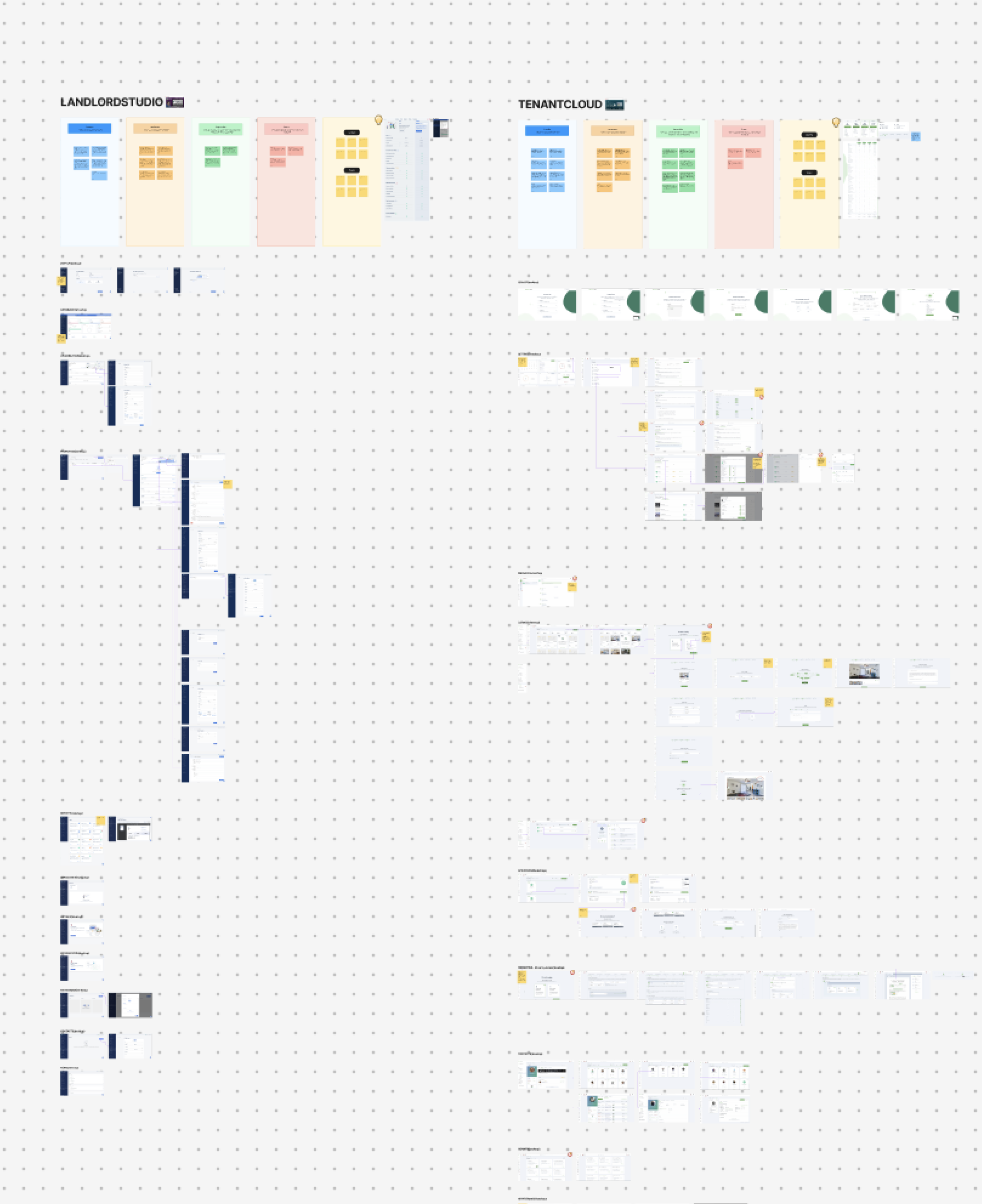
Product visualization
Design doesn’t wait for research to “finish.” It runs in parallel. As we validate assumptions and study user needs, our design team starts shaping flows, wireframes, and prototypes that help test ideas faster.
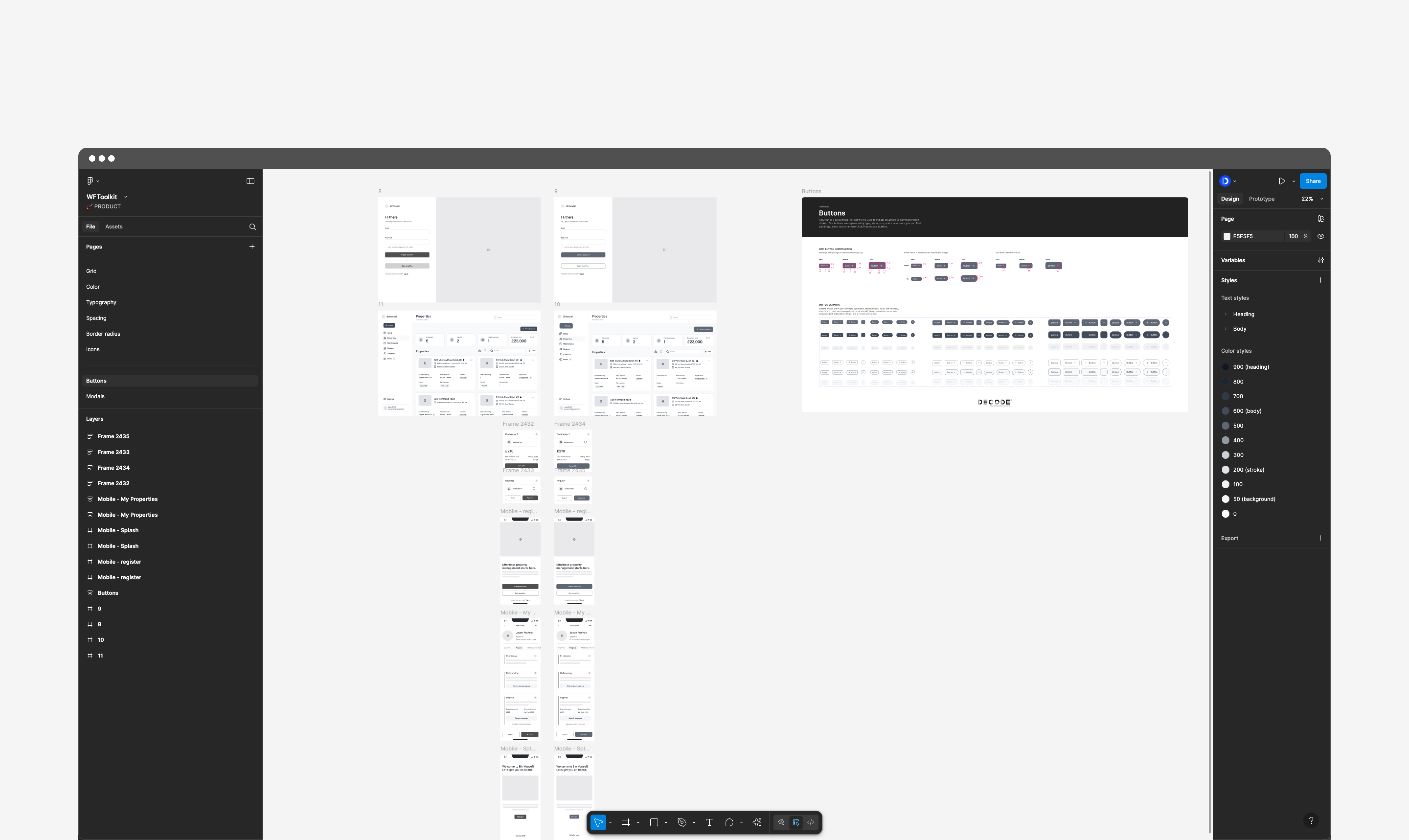
What we cover
- Information architecture
- Wireframes and interaction logic
- Visual identity and UI components
- Clickable prototypes and user testing
Information architecture
We build the backbone of your product. Using tools like card sorting and sitemap modeling, we define how information is grouped, labeled, and accessed. The result is a logical structure that helps users find what they need with minimal effort.
Wireframing
Once structure is set, we create key wireframes that define layout and behavior. Each wireframe focuses on clarity of purpose. We use tools like Figma or Whimsical to map user flows, edge cases, and navigation patterns. These wireframes become a visual script for the product, letting us make big decisions early.
Visual identity
We then layer in design — typography, color, motion, and spacing — to bring your product’s personality to life. We create scalable design systems with reusable components, ensuring consistency across platforms and future iterations. Accessibility and responsiveness aren’t afterthoughts; they’re baked in from the start.
Prototyping and user testing
We turn static screens into interactive prototypes for testing. Depending on your audience and goals, we run usability sessions or remote testing to validate flows, messaging, and interaction quality. Each iteration is backed by real user data, not opinions.
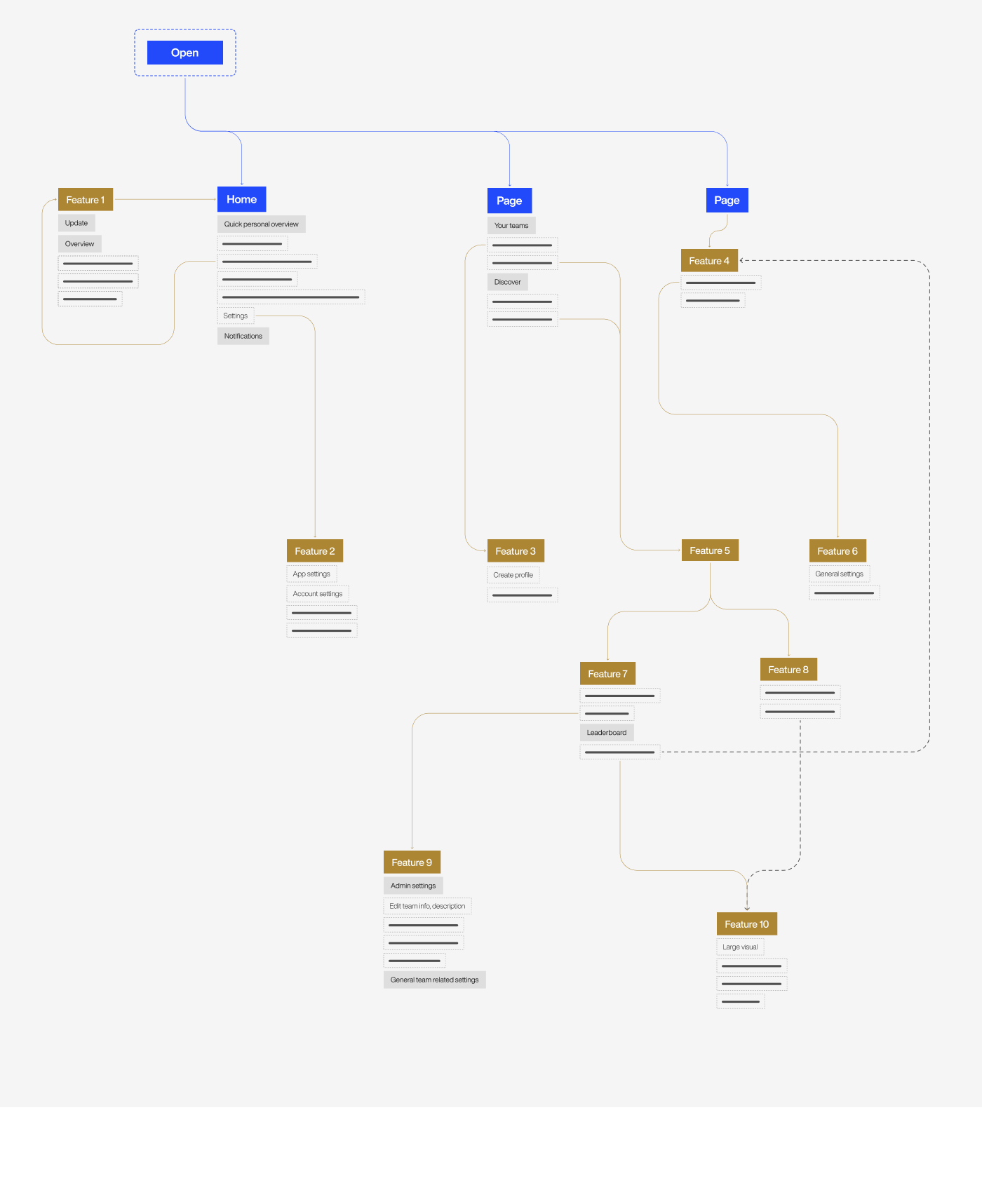
Technical solution architecture
Technical planning happens from day one. Our solution architect collaborates with product managers and designers throughout discovery, evaluating feasibility, shaping architecture, and identifying constraints as strategy and design evolve.
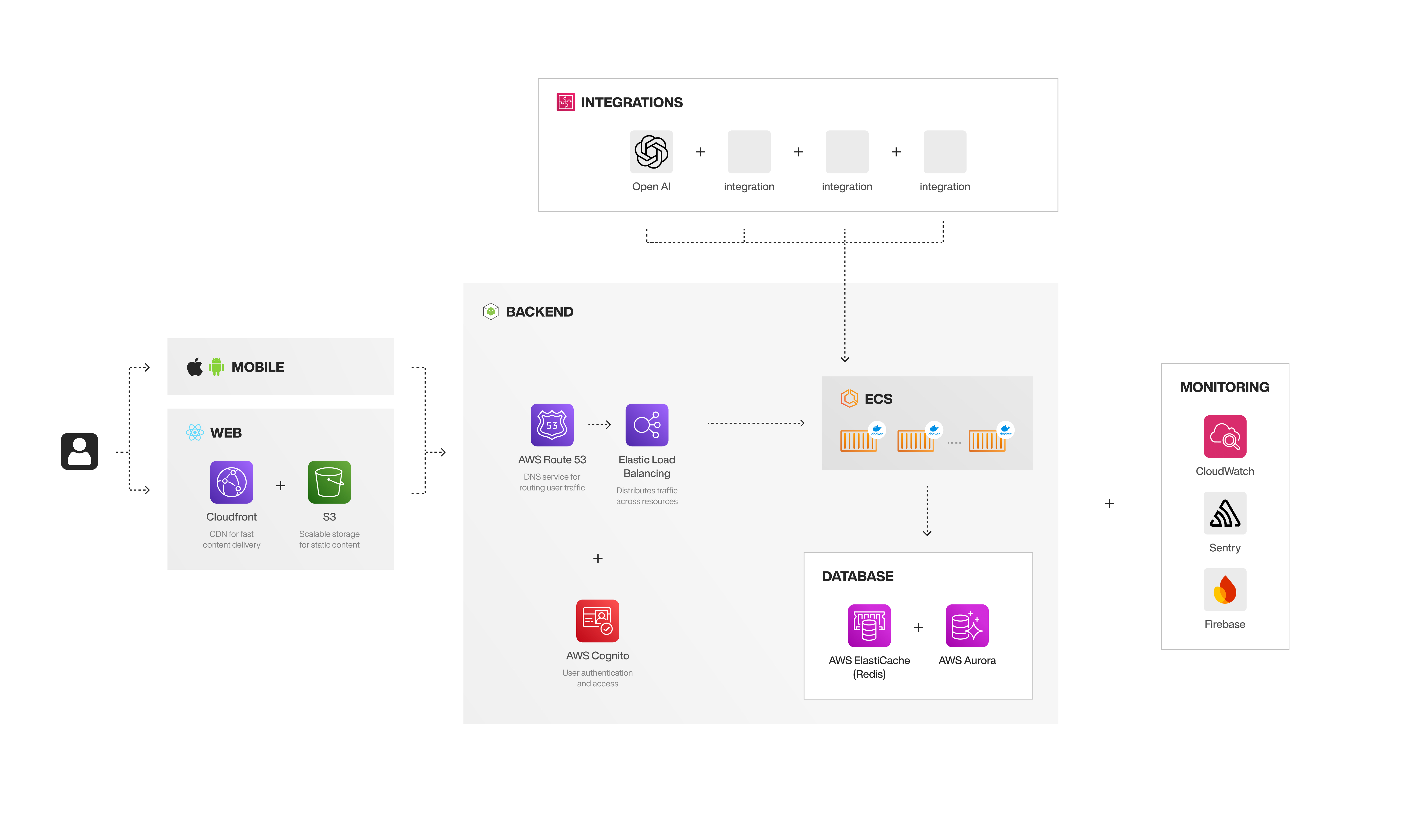
What we cover
- MVP scope and feature prioritization
- Technical research and stack selection
- System architecture and integrations
- Delivery plan
MVP scope and feature prioritization
We start by turning ideas into a structured backlog. Using frameworks like MoSCoW or RICE, we prioritize features by business value and technical complexity. This ensures your MVP focuses on delivering maximum impact.
Technical research and stack selection
Our solution architect conducts a detailed review of technical options, from frameworks and cloud platforms to integrations with third-party services. We document pros, cons, and long-term implications for each choice, recommending a stack that balances performance, scalability, and cost-efficiency.
System architecture and integrations
We design a high-level architecture diagram showing how all systems communicate — backend services, frontend, mobile, APIs, data storage, authentication, and analytics. We also outline the integration plan for any external systems, ensuring the product can evolve without hitting technical roadblocks.
Delivery plan
Finally, we prepare a transparent implementation plan. It includes breaking up development into clear phases and detailing the team composition and cost ranges. You’ll know exactly how long it will take to build, who’s needed, and what to expect at each stage of development.
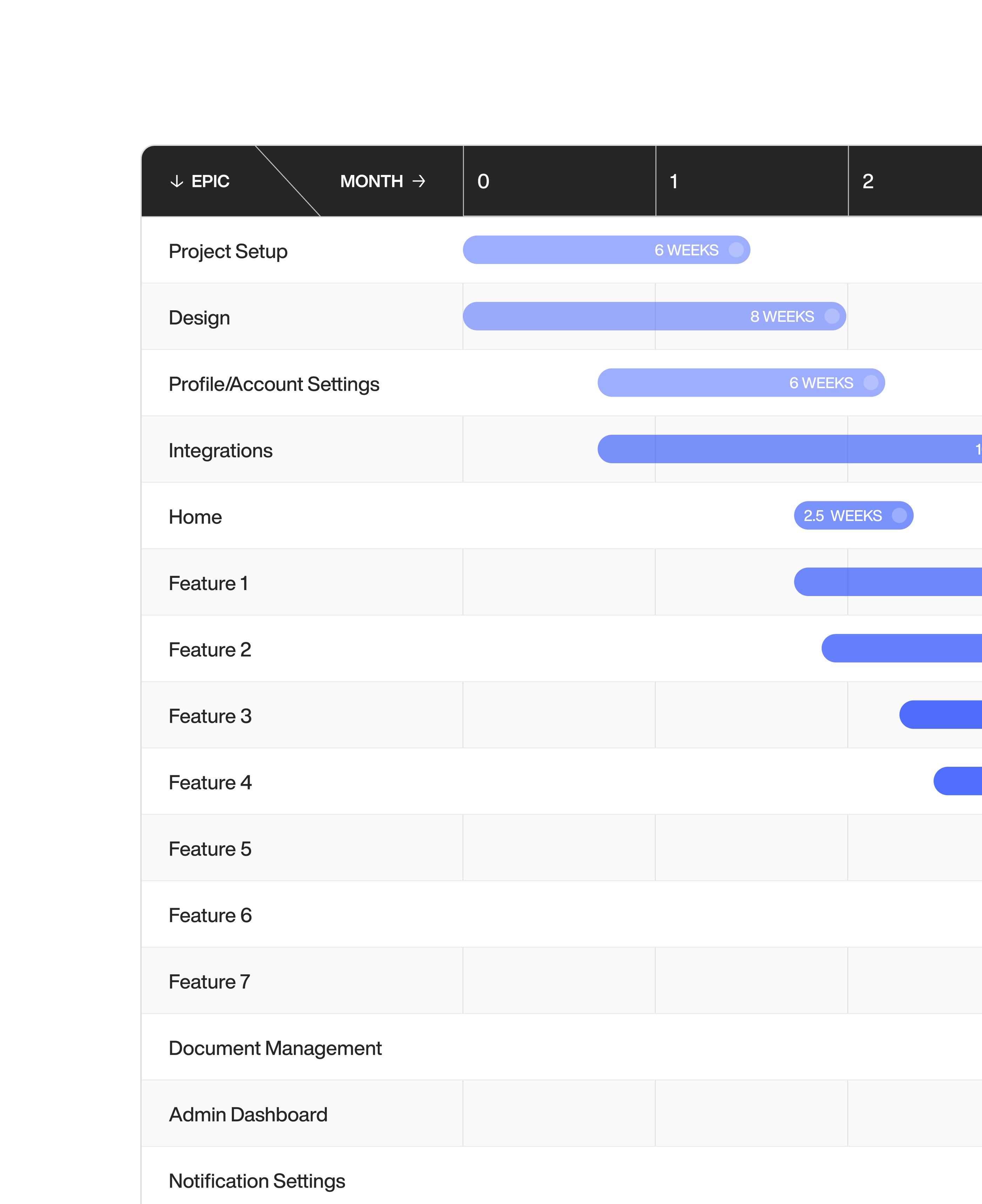
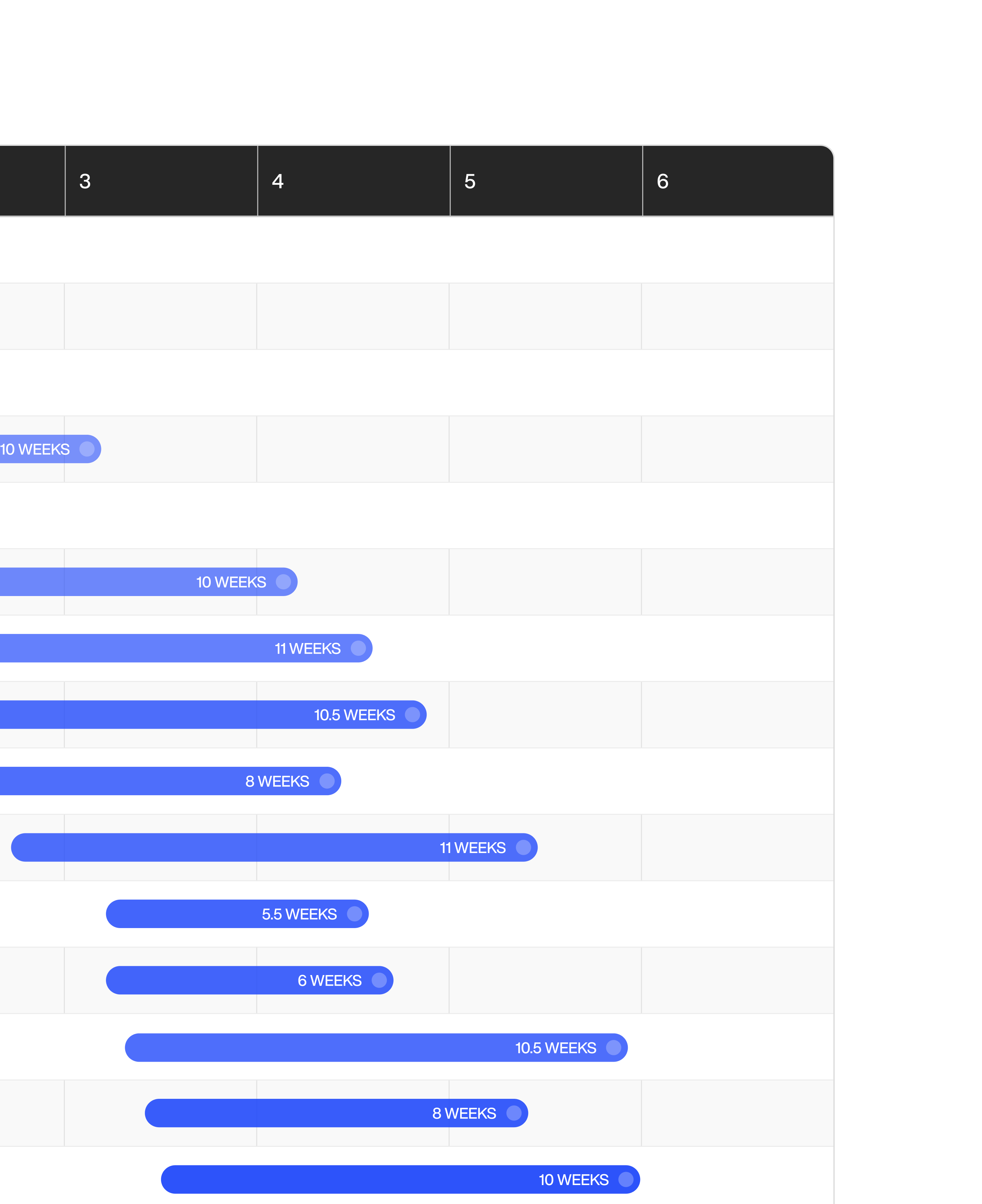
Meet your product discovery team
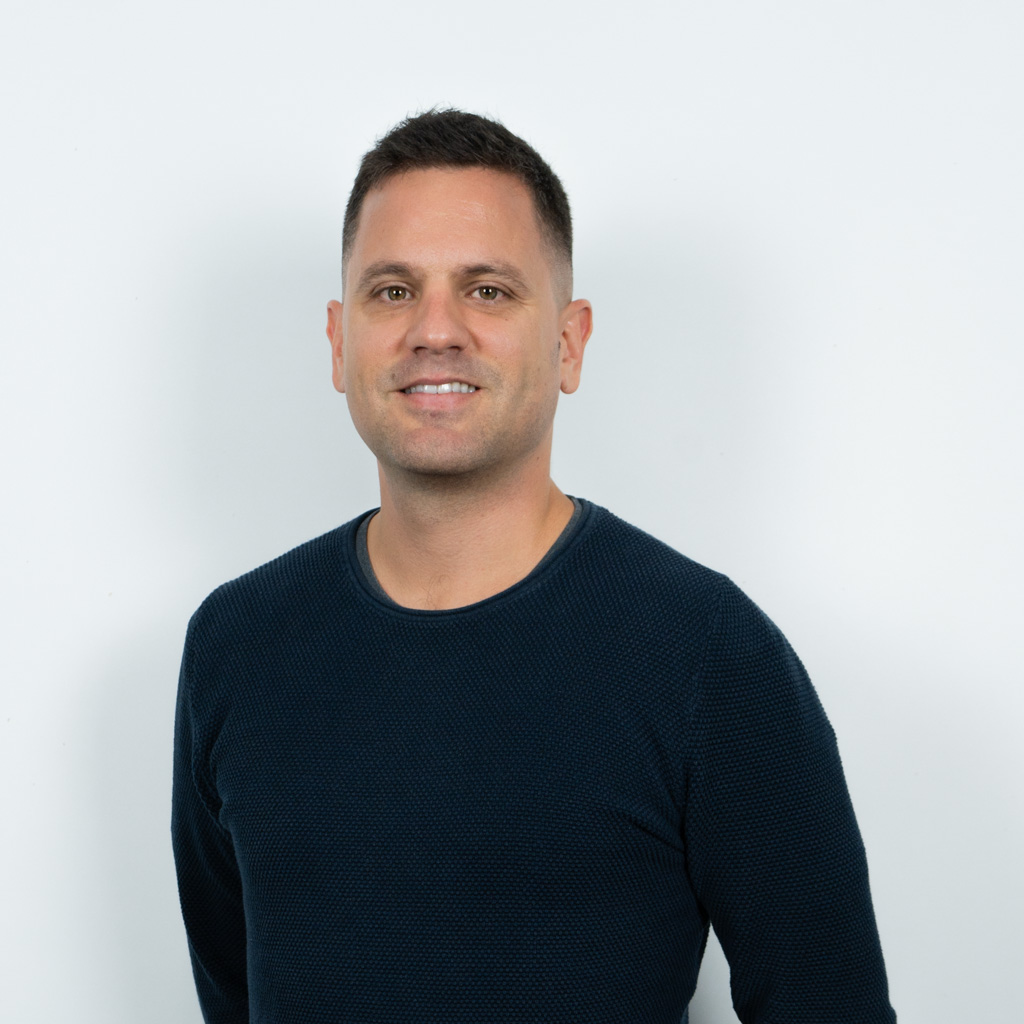
Product Manager
- Owns value and viability of the product
- Aligns business goals with user needs
- Leads workshops and manages assumptions/risks
- Prioritizes features and defines MVP scope
- Documents findings and ensures clear handover
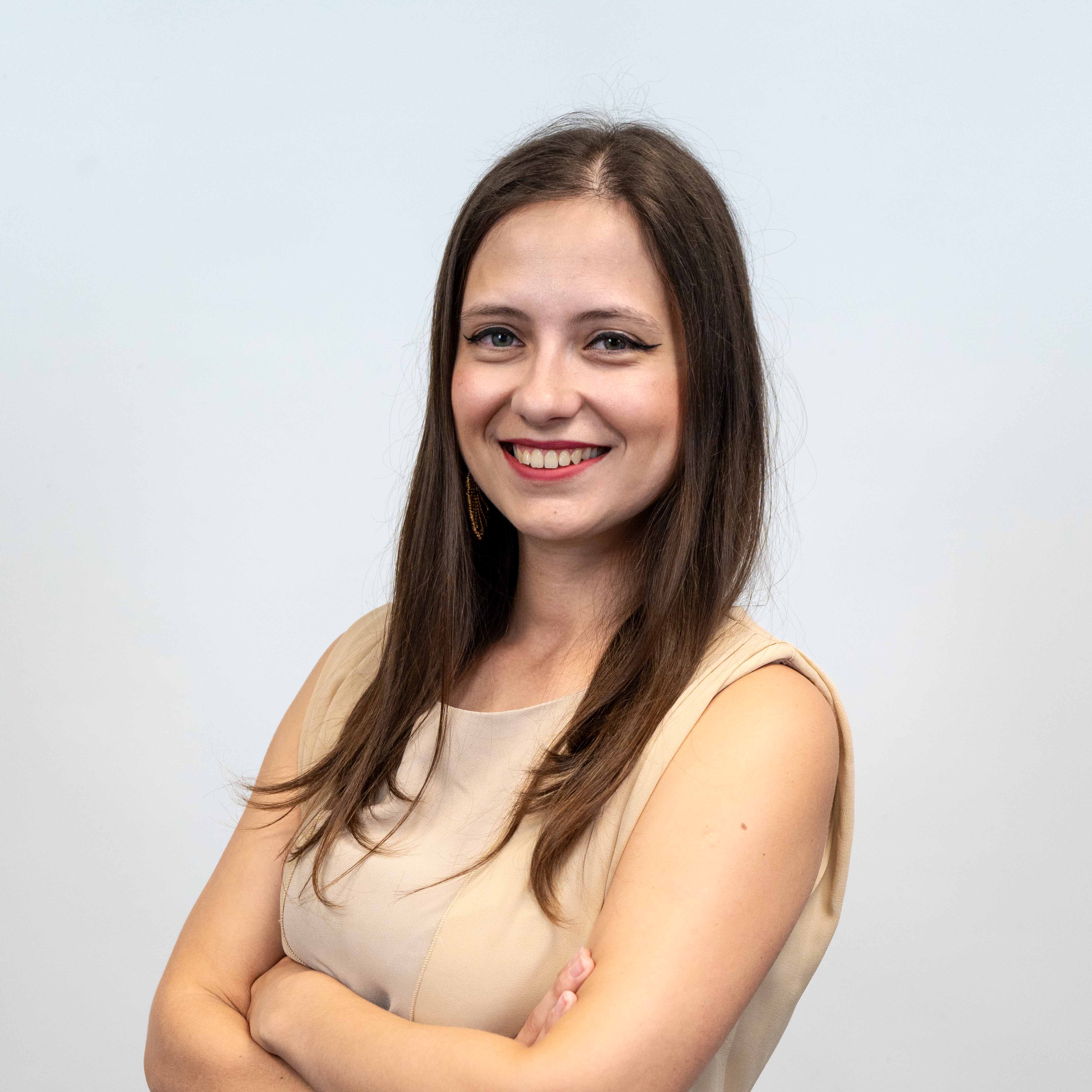
Solution Architect
- Owns feasibility of the product
- Designs the high-level technical architecture
- Recommends the right tech stack and integrations
- Identifies technical risks and constraints
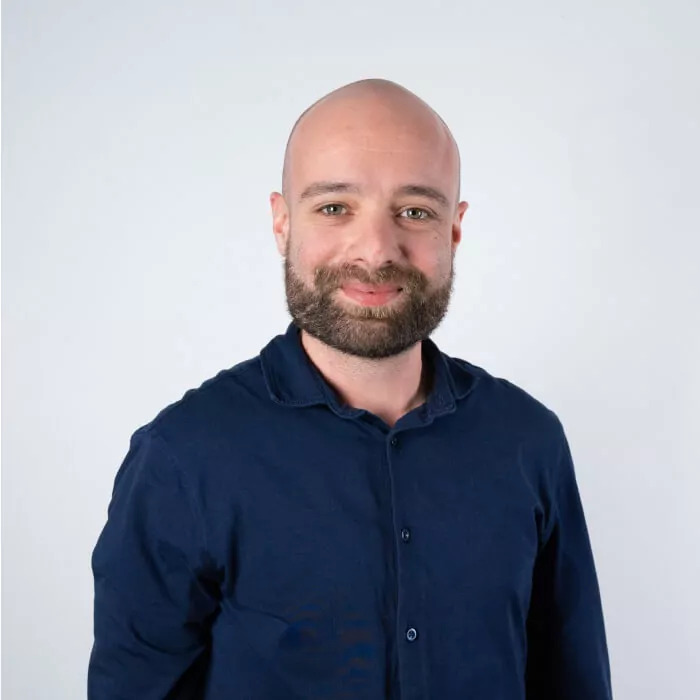
Product Designer
- Owns usability of the product
- Creates user personas, journeys, and flows
- Designs information architecture and wireframes
- Crafts key UI screens and prototypes
- Defines the visual identity
WHY US
Product discovery with a tech twist.
Our software architects will cover the part of discovery that many neglect. The feasibility part. It answers the questions: Can this be done? How can it be done? We’ll provide you with a tech stack, a list of 3rd party integrations, dependencies and we’ll mitigate all of the risks.
We made our own successful software product.
We’re not saying this to brag. All this means is we have experience creating a software product that attracts clients and has a steady source of income. If we could do it for ourselves, we can do it for you too. Check out Shake →
We follow a strict 1 team, 1 project policy.
Once a team is assigned to you, they’re dedicated only to you. That means every team member is fully focused on your project and they aren’t scattered across multiple clients. This leads to total immersion and deep understanding which results in better solutions.
We’re extremely transparent.
We share everything with you: assumptions, risks, priorities, timelines, and costs. If something changes, you’ll know immediately and understand why. This way, there are no surprises down the line, just clear information that helps you make confident decisions.
You’ll get full-service
development.
Once discovery is done, you don’t need to find another vendor. The same team that defined your strategy, designed your product, and mapped the technical solution can move straight into development. That continuity saves time, reduces risk, and keeps the product true to its vision.
Product discovery: Expert insights
More of a visual learner? Here’s our Product Manager Ivan Kardum to explain all you need to know about discovery.
The goal of product discovery is to build a product your customers will love and need.
Lead Product Manager, Ivan Kardum
You can watch our entire product discovery series — right here→
Discovery plans
Simple
All you need for a simple software product limited to either a mobile or web platform.
Duration
up to 8 weeks
Price
up to €29.000
Advanced
Great choice for multi-platform products requiring more research.
Duration
10-16 weeks
Price
€29.000 – €55.000
Complex
For multi-platform software product ideas with a set of many complex features.
Duration
18+ weeks
Price
€55.000+
Every discovery project is unique and the above are just ballpark estimates. To get a clearer picture — Book a free call with an expert→
Our work
- Real estate platform
- Finance management platform
In just 7 weeks, we delivered full product discovery for a FinTech startup, from prototype and key UI screens to complete system architecture.
This could be the start of a great partnership
Fill in the short form below, or skip to the bottom to arrange a chat directly with our Strategic Partnerships Manager. Either way, we’ll be back in touch as soon as we can to arrange an informal call.
Don’t worry, any information you give us will only be stored for business purposes. Find out more in our Privacy Policy.
Still unsure about something?
Don’t worry, whatever it is, we’ve got you covered in our FAQ.
Because it’s the difference between building something that fails and something people actually want.
With product discovery, we turn your idea into a validated plan. We test assumptions, talk to users, and define what to build, how it should work, and the resources required.
That way, when development starts, you already know you’re building something that solves the right problem.
Once we finish discovery, you’ll have everything you need to move forward.
That includes a clear feature set, user flows, technical plan, clickable prototype, and more – depending on the scope.
We can continue into design and development with you, or hand over the documentation if you’re working with your own team.
Either way, we define the direction, test it, and scope it, so you’re ready to build no matter what.
Not at all.
Discovery is just as useful when you’re adding major features, planning a redesign, or upgrading an existing product.
It helps you successfully realign, spot risks early, and decide what’s actually worth building.
Whether you’re starting from scratch or building on top of something, discovery keeps future design and development focused.
Our solution architects design the high-level architecture, recommend the tech stack, and plan integrations.
We also map out risks – technical, market, and user-related – and provide strategies to handle them.
This ensures your product is buildable, scalable, and future-proof.
- Product discovery – Exploring your idea to understand user needs, market fit, and the best solution approach.
- MVP scoping – Defining the minimum set of features needed to launch a usable product and validate the concept.
- Technical feasibility – Assessing whether the product can be built as planned, identifying risks, required technologies, and potential constraints.
We combine market analysis and direct user research.
That means we study your competitors, identify gaps in the market, run surveys, and interview your target users to uncover their frustrations and motivations.
The result is a detailed report on your market position, user pain points, and opportunities.
We start with assumption mapping and risk analysis to uncover what we know, what we don’t, and what we need to test.
From there, we:
- Run discovery workshops
- Conduct user interviews
- Perform competitive analysis
- Carry out usability testing
This way, we validate every assumption with real data before you invest in development.
Yes.
If you already have research or designs, we’ll use them as a starting point.
We’ll review what you have, validate it, and add anything that might be missing.
That way, you don’t repeat work and we make sure your product has a solid foundation.
Our approach is flexible – we can step in at any stage and help you move forward with confidence.
Across most projects, these are the core deliverables we give our clients:
- Project alignment document – A short, high-level summary of the project’s scope, goals, and what’s already known from early workshops.
- Assumptions and risks – A list of assumptions plus potential risks, with a plan for how to handle them.
- Market research and competitor analysis – A breakdown of the market landscape and competing products.
- User personas – Fictional but data-based profiles that represent your main user groups.
- User journey – A step-by-step map of how a user moves through your product.
- User research – Interviews, surveys, and observations with real users.
- User flow diagrams – Visuals showing how backend and frontend logic connect and how screens tie together.
- Wireframes – Low-fidelity layouts that illustrate structure and key functionality.
- Feature prioritization – A list of features categorized and scored based on value, effort, and dependencies.
- Technical solution proposal – Documentation of system architecture, integration points, estimated effort, team structure, and budget.
- Visual identity guidelines – A mini brand book with color palette, typography, and logo rules to guide the product’s look.
- UI design and clickable prototype – High-fidelity designs linked together into a functional prototype.
- Timeline & Development Budget – A clear estimate of the project’s schedule and costs to help plan resources and milestones.
- Documentation handover – The complete package of approved deliverables, organized and ready for handoff.
But, the important thing to remember is that we don’t deliver everything by default.
We tailor each discovery to the project and focus on what’s most useful to you.
Yes.
We offer a free 30-minute consultation with our senior consultants. Contact us to schedule yours.
Learn more about product discovery
Win customers over in a saturated market
Svjetlana Vukic, explains why understanding your buyer persona is important when developing a software product.
29 min
5 key steps to product-market fit
Navigating the path to product-market fit can be quite challenging if you want to have a software product that’s going to stand out.
Davor Culjak points out the key areas that are crucial for developing a successful product.
29 min
Create a software company from scratch and land big clients
How do you build a company and land big clients? The answer to that question is revealed by David Chevalier, CEO and founder of Surfe, a software company which helps connect LinkedIn profiles and CRM.
50 min
What angel investors are looking for when investing in a software startup
On this episode of The Roadmap, we are joined by Chris Piedmonte, an angel investor with over 30 years of experience in the software industry. Chris shares his valuable insights about what angel investors are looking for when investing in a software startup.
43 min
- by Ivan Kardum 19 min readA 6-step-guide to great product discovery
All you need to know about product discovery for mobile apps in this 6 step guide.
- by Ivan Kardum 11 min readWhy is product discovery important?
There are many reasons product discovery is crucial for app success. Here, we highlighted the most important ones.
- by Ivan Kardum 13 min read6 worst product discovery mistakes and how to avoid them
Making mistakes in product discovery can lead to problems in delivery. Here, we show you how to avoid them.
- by Mario Zderic 11 min read7 mistakes to avoid while building an MVP for your mobile app
We’ll discuss seven common MVP mistakes that you should avoid to make the process of building your MVP much easier.
- by Boris Plavljanic 14 min readWhat is idea validation in product discovery?
Idea validation is a crucial part of product discovery. In this article, we’ll explain its benefits and ways to do it.
- by Ivan Kardum 12 min readBest practices in continuous product discovery
In this article, we discuss the best practices necessary to make continuous product discovery a success.

